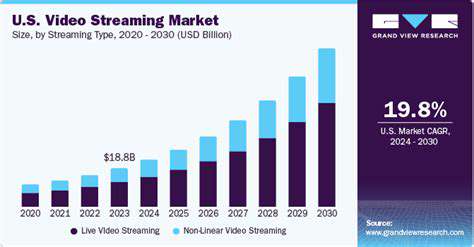Supply Side Platforms (SSPs) and Demand Side Platforms (DSPs)
Key Features and Benefits for Both Sides
Publisher Benefits
Supply-side platforms (SSPs) offer significant advantages to publishers. By connecting with multiple demand-side platforms (DSPs), SSPs provide publishers with access to a wider range of potential buyers for their ad inventory. This increased competition leads to higher ad revenue, as publishers can negotiate better rates and maximize the value of their ad space. SSPs also automate the process of selling ad inventory, saving publishers valuable time and resources that would otherwise be spent on manual negotiations and ad placements.
Furthermore, SSPs often provide publishers with detailed reporting and analytics on ad performance. This allows publishers to understand which ads are performing well, which demographics are engaging with their content, and how to optimize their strategies for maximum revenue generation. This data-driven approach to ad sales is crucial for publishers looking to fine-tune their strategies and maximize their return on investment (ROI).
Advertiser Benefits
For advertisers, SSPs and their corresponding DSPs represent a significant advancement in the efficiency and effectiveness of online advertising. By leveraging SSPs, advertisers can access a vast pool of ad inventory from various publishers, allowing for a more targeted approach to reaching their desired audience. This targeting is facilitated by the data and insights provided by the SSPs and DSPs, enabling advertisers to precisely define the demographics, interests, and behaviors of their ideal customers.
Beyond targeting, SSPs facilitate efficient ad buying and management. Advertisers can automate the process of bidding for ad space, leveraging real-time bidding (RTB) capabilities to ensure they are securing the most optimal ad placements at the best possible price. This automation saves advertisers valuable time and resources, allowing them to focus on other aspects of their marketing strategies. Overall, the efficiency and reach offered by SSPs benefit advertisers immensely.
Improved Transparency and Efficiency
The integration of SSPs and DSPs introduces a new level of transparency and efficiency into the online advertising ecosystem. Publishers and advertisers are no longer limited by manual processes and individual negotiations. The automated, real-time bidding and inventory management systems provided by SSPs create a streamlined and competitive environment for both sides. This efficiency translates to quicker ad placements, optimized pricing models, and increased opportunities for both parties to maximize their returns.
This transparency and efficiency also foster a more dynamic and responsive advertising environment. The constant flow of data and information allows both sides to quickly adapt to market trends and optimize their strategies in real-time. The increased speed and agility in the ad buying and selling process drive innovation in the industry and ultimately benefit both publishers and advertisers in the long term, allowing for more relevant and effective online advertising campaigns.
Enhanced Targeting and Audience Reach
SSPs enable a far more sophisticated approach to targeting specific audiences compared to traditional methods. By leveraging vast amounts of data and employing real-time bidding, advertisers can precisely target consumers based on their demographics, interests, browsing history, and more. This refined targeting ensures that ads are presented to the most relevant audience, maximizing the likelihood of engagement and conversion. The result is a substantial improvement in campaign effectiveness and a better return on investment (ROI) for advertisers.
This enhanced targeting also extends to publishers, allowing them to leverage data to understand their audience better and tailor their content to better meet their needs. This improved understanding ultimately allows publishers to create more engaging content, attract a more relevant audience, and further enhance their monetization strategies. This mutually beneficial relationship between publishers and advertisers fosters a more robust and effective online advertising ecosystem.
The Future of SSPs and DSPs in the Digital Landscape
The Evolving Role of SSPs
Supply-side platforms (SSPs) are rapidly evolving from simple ad-serving tools to sophisticated technology hubs that optimize inventory management and maximize revenue for publishers. This evolution is driven by the increasing complexity of the digital advertising ecosystem and the need for publishers to compete effectively in a crowded marketplace. SSPs are increasingly incorporating sophisticated algorithms to analyze real-time data, predict ad demand, and dynamically adjust pricing to optimize revenue generation. This shift reflects a move beyond basic ad placement to a more strategic and data-driven approach to monetizing digital assets.
Moreover, the rise of programmatic advertising has significantly impacted the role of SSPs. Publishers are now increasingly relying on SSPs to automate the sale of their ad inventory, reducing manual processes and allowing them to scale their operations efficiently. This automation, coupled with the ability to leverage real-time bidding (RTB) data, allows publishers to tap into a wider range of potential advertisers and maximize their earning potential.
The Impact of Data and AI
The integration of artificial intelligence (AI) and machine learning (ML) into SSPs is transforming the landscape. AI-powered algorithms are crucial for analyzing vast datasets of user behavior, ad performance, and market trends. This analysis allows SSPs to anticipate demand patterns, optimize pricing strategies, and ultimately deliver higher returns for publishers. The ability to personalize ad experiences based on real-time data is a significant benefit. The future of SSPs lies in their ability to leverage data effectively to create a more sophisticated and responsive advertising environment.
The DSP Perspective: Enhanced Targeting and Efficiency
Demand-side platforms (DSPs) are also undergoing a transformation, with an increasing focus on enhanced targeting and efficiency. DSPs are evolving to provide advertisers with more granular control over their campaigns, allowing them to precisely target specific demographics, interests, and behaviors. This refinement in targeting is directly correlated with improved campaign ROI. Sophisticated algorithms are key to this evolution, allowing for dynamic optimization and real-time adjustments to campaign strategies, ultimately leading to a more efficient and effective advertising experience for advertisers.
Furthermore, DSPs are increasingly integrating with other technologies, such as CRM and marketing automation platforms, to provide a more holistic view of the customer journey. This integration allows for a more sophisticated understanding of customer behavior, leading to more effective and personalized advertising campaigns. This enhanced understanding translates directly to increased campaign performance and return on investment for advertisers.
The Future of Collaboration
The future of both SSPs and DSPs hinges on increased collaboration. Open communication and data sharing between these platforms can create a more transparent and efficient ecosystem. This collaboration can lead to improved ad targeting, enhanced user experiences, and increased revenue for all participants. The digital advertising landscape is increasingly complex, requiring a collaborative approach to navigate the challenges and realize the full potential of the market. This includes standardized metrics and common reporting formats to foster greater understanding and trust amongst all stakeholders.
Read more about Supply Side Platforms (SSPs) and Demand Side Platforms (DSPs)
Hot Recommendations
- Attribution Modeling in Google Analytics: Credit Where It's Due
- Understanding Statistical Significance in A/B Testing
- Future Proofing Your Brand in the Digital Landscape
- Measuring CTV Ad Performance: Key Metrics
- Negative Keywords: Preventing Wasted Ad Spend
- Building Local Citations: Essential for Local SEO
- Responsive Design for Mobile Devices: A Practical Guide
- Mobile First Web Design: Ensuring a Seamless User Experience
- Understanding Your Competitors' Digital Marketing Strategies
- Google Display Network: Reaching a Broader Audience










